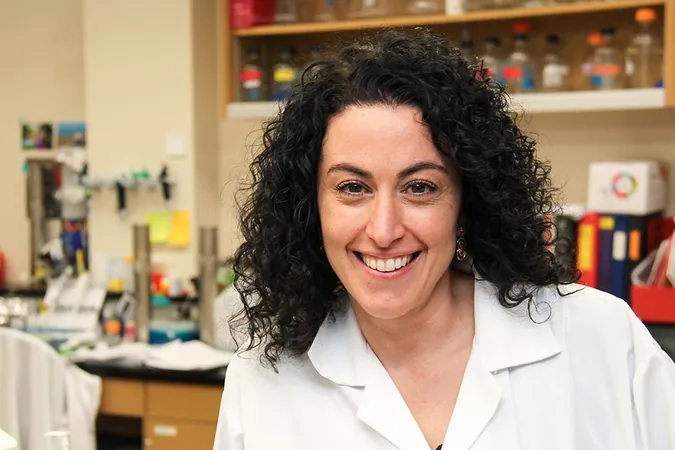
USask Researchers Uncover New Insights for Revolutionary HIV Treatments!
2024-12-30
Author: Liam
Introduction
The fight against HIV/AIDS has been a relentless battle since the virus first came into public awareness in the early 1980s. Over the decades, approximately 42 million lives have been lost to this disease. Despite advancements in treatments that allow individuals to live longer and healthier lives, many are still yearning for a definitive cure.
Dr. Linda Chelico's Research
Dr. Linda Chelico, who leads the Department of Microbiology, Immunology, and Biochemistry at the University of Saskatchewan (USask), emphasizes the ongoing struggle against HIV. "It is a chronic condition that people would love to see eradicated," she states. Dr. Chelico is at the forefront of research focused on the immune response to HIV, specifically examining a group of proteins known as APOBEC3, which serve to induce mutations in the HIV virus.
Recent Findings
Recent findings from Chelico's lab reveal that while APOBEC3 works to combat HIV, the virus has evolved a sophisticated counter-attack mechanism using a protein called Vif. "It’s a continuous battle happening at the cellular level," explains Chelico. Vif plays a crucial role in destabilizing the defenses provided by APOBEC3, allowing HIV to establish infections more effectively.
Breakthrough in Drug Development
Despite previous efforts to develop drugs that inhibit this interaction between Vif and APOBEC3, progress has been slow and largely ineffective. But now, a new breakthrough has emerged! Dr. Chelico and USask post-doctoral fellow Dr. Amit Gaba have identified previously unknown interactions between these proteins, laying the groundwork for improved drug design. Their findings have been published in the prestigious Journal of Virology by the American Microbiology Association.
Implications for Future Research
"What we found suggests prior inhibitors failed because they targeted the wrong interfaces of protein interactions," Chelico reveals. "With our enhanced understanding of these interactions, we believe we can create a more effective inhibitor." Unlike previous studies that only examined singular strains of HIV with one Vif protein, Chelico's research utilized a broader variety of HIV viruses, exposing the diversity of Vif proteins and the collective action of APOBEC3 during an infection.
Collaboration and Antiviral Capabilities
"Our lab has demonstrated that APOBEC3 proteins collaborate to form a structure that enhances their antiviral capabilities,” says Chelico. If researchers can effectively disrupt the interaction between Vif and APOBEC3, this could lead to a significant breakthrough in developing a natural defense mechanism against HIV.
Conclusion
"This discovery brings a renewed sense of hope. HIV remains an urgent global health crisis," says Chelico. While existing treatments primarily suppress the virus, this innovative approach may help harness the body’s innate defenses to prevent infections from establishing themselves.
Chelico's pioneering research not only provides a potential new pathway for effective HIV treatments but could also inspire other avenues of exploration in the quest for a cure. As scientists continue to unlock the mysteries of HIV, the possibility of transforming the lives of millions remains tantalizingly close. Stay tuned for updates as this groundbreaking research unfolds!



 Brasil (PT)
Brasil (PT)
 Canada (EN)
Canada (EN)
 Chile (ES)
Chile (ES)
 Česko (CS)
Česko (CS)
 대한민국 (KO)
대한민국 (KO)
 España (ES)
España (ES)
 France (FR)
France (FR)
 Hong Kong (EN)
Hong Kong (EN)
 Italia (IT)
Italia (IT)
 日本 (JA)
日本 (JA)
 Magyarország (HU)
Magyarország (HU)
 Norge (NO)
Norge (NO)
 Polska (PL)
Polska (PL)
 Schweiz (DE)
Schweiz (DE)
 Singapore (EN)
Singapore (EN)
 Sverige (SV)
Sverige (SV)
 Suomi (FI)
Suomi (FI)
 Türkiye (TR)
Türkiye (TR)
 الإمارات العربية المتحدة (AR)
الإمارات العربية المتحدة (AR)